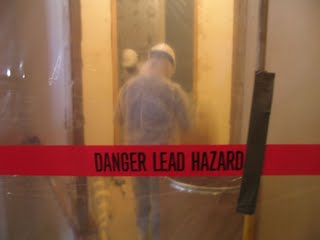
An interesting decision came out of the Appellate Division, Third Department on December 31st with respect to lead paint cases, that sharply clarifies some of the issues needed to bring such a case.
Before getting to the case, a little background: Lead paint cases are, generally speaking, brought by the parents of infants that have ingested cracked and peeling lead paint, and seek to hold the landlords responsible for the injuries (which are often neurologic in nature, including learning disabilities). The paint is a relic from pre-1978 days (when it was banned in residences due to its poisonous nature) and, in addition to being eaten by small kids, can also fill the air with lead dust during renovation. Lead in toys from China has been a hot bead of problems over the last year, for just this reason.
In Charette v Santspree, the appellate court dealt with the level of notice that a landlord had to have to be held accountable for the poisoning. But in this case, despite the lack of any complaints, the court held that the landlord had constructive notice of the condition. That is, they should have known about the cracked and peeling paint.
In proving constructive notice, the plaintiff needs to show five things: That the landlord
(1) retained a right of entry to the premises and assumed a duty to make repairs;
(2) knew that the apartment was constructed at a time before lead-based interior paint was banned;
(3) was aware that paint was peeling on the premises;
(4) knew of the hazards of lead-based paint to young children; and
(5) knew that a young child lived in the apartment.
Since there was evidence of all five elements here, the court refused the defendants’ request to toss the case out on summary judgment.
But in an interesting turn, the court acknowldged that the defendants had the winning argument regarding lack of knowledge for the private areas of the apartment building (which had six tenants). But the defendants lost because there was substantial evidence of the paint peeling in the common areas. And defendants would have seen those common areas when coming on a monthly basis to collect the rent. That would have given the landlords either actual, or constructive, notice of the evident peeling paint in those areas.
Given that the plaintiff “observed paint chipping and peeling from the walls in the common areas of the building not long after she took possession of the second floor apartment and that these conditions continued to exist throughout her tenancy,” both the recent and past owners of the building had summary judgment denied.
All in all, the case represents a nice review of the issues of notice regarding lead paint cases, and a bit of a road map on how to proceed and the available theories that exist.